Camera traps have been a key part of the conservation toolkit for decades. Remotely triggered video or still cameras allow researchers and managers to monitor cryptic species, survey populations, and support enforcement responses by documenting illegal activities. Increasingly, machine learning is being implemented to automate the processing of data generated by camera traps.
A recent study published showed that, despite being well-established and widely used tools in conservation, progress in the development of camera traps has plateaued since the emergence of the modern model in the mid-2000s, leaving users struggling with many of the same issues they faced a decade ago. That manufacturer ratings have not improved over time, despite technological advancements, demonstrates the need for a new generation of innovative conservation camera traps. Join this group and explore existing efforts, established needs, and what next-generation camera traps might look like - including the integration of AI for data processing through initiatives like Wildlife Insights and Wild Me.
Group Highlights:
Our past Tech Tutors seasons featured multiple episodes for experienced and new camera trappers. How Do I Repair My Camera Traps? featured WILDLABS members Laure Joanny, Alistair Stewart, and Rob Appleby and featured many troubleshooting and DIY resources for common issues.
For camera trap users looking to incorporate machine learning into the data analysis process, Sara Beery's How do I get started using machine learning for my camera traps? is an incredible resource discussing the user-friendly tool MegaDetector.
And for those who are new to camera trapping, Marcella Kelly's How do I choose the right camera trap(s) based on interests, goals, and species? will help you make important decisions based on factors like species, environment, power, durability, and more.
Finally, for an in-depth conversation on camera trap hardware and software, check out the Camera Traps Virtual Meetup featuring Sara Beery, Roland Kays, and Sam Seccombe.
And while you're here, be sure to stop by the camera trap community's collaborative troubleshooting data bank, where we're compiling common problems with the goal of creating a consistent place to exchange tips and tricks!
Header photo: Stephanie O'Donnell
- @Jeremy_
- | He/His
Recently teamed up with https://www.earthtoolsmaker.org/ founder



- 0 Resources
- 16 Discussions
- 4 Groups
Building Animal Detect: Software tool to process wildlife data in minutes using latest cool tech.





- 0 Resources
- 27 Discussions
- 3 Groups
Worked as a mechanical engineer for a defence co, then software engineer, then for a research lab specialising in underwater robotics.



- 1 Resources
- 144 Discussions
- 16 Groups
- @carlybatist
- | she/her
ecoacoustics, biodiversity monitoring, nature tech



- 111 Resources
- 356 Discussions
- 19 Groups
HaMaarag
Quantitative ecologist
- 0 Resources
- 0 Discussions
- 4 Groups
- @emcandler
- | she/her
- 0 Resources
- 0 Discussions
- 6 Groups
- 0 Resources
- 0 Discussions
- 3 Groups
Senior Wildlife Research Scientist
- 0 Resources
- 0 Discussions
- 7 Groups
Scaling biodiversity monitoring, using smart sensors and ai-pipelines

- 0 Resources
- 2 Discussions
- 10 Groups
- @ahmedjunaid
- | He/His
Zoologist, Ecologist, Herpetologist, Conservation Biologist





- 63 Resources
- 7 Discussions
- 26 Groups
- @hpishdast2023
- | she/her
- 0 Resources
- 0 Discussions
- 4 Groups
University of Florida (UF)
- 0 Resources
- 1 Discussions
- 4 Groups
I put together some initial experiences deploying the new SpeciesNet classifier on 37,000 images from a Namibian camera trap dataset and hope that sharing initial impressions might be helpful to others.
23 April 2025
A nice resource that addresses the data interoperability challenge from the GBIF.
4 April 2025
Conservation International is proud to announce the launch of the Nature Tech for Biodiversity Sector Map, developed in partnership with the Nature Tech Collective!
1 April 2025
The FLIR ONE thermal camera is a compact and portable thermal imaging device capable of detecting heat signatures in diverse environments. This report explores its application in locating wild animals across large areas...
27 March 2025
WWF's Arctic Community Wildlife Grants program supports conservation, stewardship, and research initiatives that focus on coastal Arctic ecology, community sustainability, and priority Arctic wildlife, including polar...
7 March 2025
The Smithsonian’s National Zoo and Conservation Biology Institute (SNZCBI) is seeking an intern to assist with multiple projects related to conservation technology for wildlife monitoring. SNZCBI scientists collect data...
3 March 2025
Article
NewtCAM is an underwater camera trap. Devices are getting deployed worldwide in the frame of the CAMPHIBIAN project and thanks to the support of our kind early users. Here an outcome from the UK.
24 February 2025
Osa Conservation is launching our inaugural cohort of the ‘Susan Wojcicki Research Fellowship’ for 2025, worth up to $15,000 per awardee (award value dependent on project length and number of awards given each year)....
10 February 2025
Did someone read/know this book?
9 February 2025
The worst thing a new conservation technology can do is become another maintenance burden on already stretched field teams. This meant Instant Detect 2.0 had to work perfectly from day 1. In this update, Sam Seccombe...
28 January 2025
This leads to an exciting blog we did recently, it also includes a spatial map indicating elephant movement tracks of an orphaned elephant who self released himself into the wild (Kafue National Park). Cartography was...
28 January 2025
The Zoological Society of London's Instant Detect 2.0 is the world's first affordable satellite connected camera trap system designed by conservationists, for conservationists. In this update, Sam Seccombe describes the...
21 January 2025
June 2025
July 2025
March 2025
event
event
February 2025
event
January 2025
58 Products
Recently updated products
4 Products
Recently updated products
| Description | Activity | Replies | Groups | Updated |
|---|---|---|---|---|
| We have spent the past 9 months taking the lessons learnt from the AMI system to build an automated moth monitoring system... |
|
Autonomous Camera Traps for Insects, Camera Traps | 12 hours 12 minutes ago | |
| Lively and informative discussion, I would very much like to contribute if there is some active development work with regards to this. I have recent experience with using... |
+31
|
Data management and processing tools, Camera Traps, Software Development | 5 days 3 hours ago | |
|
|
Latin America Community, Acoustics, AI for Conservation, Camera Traps, Drones, Early Career | 2 weeks 5 days ago | ||
| @LukeD, I am looping in @Kamalama997 from the TRAPPER team who is working on porting MegaDetector and other models to RPi with the AI HAT+. Kamil will have more specific questions. |
|
AI for Conservation, Camera Traps | 2 weeks 6 days ago | |
| Hi Ștefan! In my current case, I am trying to detect and count Arctic fox pups. Unfortunately, Arctic fox does not seem to be included in the training data of SpeciesNet but... |
+16
|
AI for Conservation, Camera Traps | 3 weeks ago | |
| Interesting. Thanks for the explanation. Nice to hear your passion showing through. |
|
AI for Conservation, Camera Traps, Data management and processing tools, Open Source Solutions, Software Development | 3 weeks 2 days ago | |
| Weeks with continuous inference would require a pretty big battery. I expect you would need some kind of customisation and maybe quite a bit of compromise to last weeks and on a... |
|
Camera Traps | 3 weeks 2 days ago | |
| 📸 Do you use camera traps in your work? Take part in our survey!Hi everyone! I’m currently a final-year engineering... |
|
Camera Traps, AI for Conservation, Data management and processing tools, Open Source Solutions, Software Development | 3 weeks 3 days ago | |
| That's great! |
|
Camera Traps | 4 weeks 1 day ago | |
| True, the US ecosystem is a challenging space right now, for basically all sectors. We should not let the US chaos prevent us from engaging with opportunities in other... |
|
AI for Conservation, Camera Traps, Connectivity, Drones, Emerging Tech, Ethics of Conservation Tech, Marine Conservation, Sensors | 1 month ago | |
| Yes, I know about this big limitation,As far as I know they are working to increase the coverage available for this solution.For trusted developers, there are more regions... |
|
Connectivity, Camera Traps | 1 month 1 week ago | |
| Hi, just wanted to let whoever is interested that v.1.3 of DeepFaune is out! Deepfaune is a software that runs on any standard... |
|
Camera Traps, AI for Conservation, Open Source Solutions | 1 month 1 week ago |
Camera Trapping for Conservation
 Meredith Palmer
and 1 more
Meredith Palmer
and 1 more
5 March 2025 9:10am
Wildlife Monitoring Internship 2025
3 March 2025 3:02pm
Guidance for Media Project in Rhodoppe
28 February 2025 9:53am
1 March 2025 9:17am
Hi Oren.
Since we interface our devices to many different camera traps, we've had the chance to observe the image quality (as well as the innards) of a variety of them. I would say that at the moment, we interface our devices to Browning camera traps compared to others by a wide margin. this was only in the last few years as Reconyx and Bushnell also used to be more popular. For image quality, I would recommend Browning Spec Ops and Recon Force. If you're on X or Instragram, I recommend checking out the videos from @cameratrapsue . She mainly uses Browning and they are a good example of the image quality.
As an aside, we have no connection to Browning and do not receive anything from them. We're just trying to help :)
Akiba
2 March 2025 11:48am
Thanks Akiba! That's the conclusion I got to as well. Glad to have your vote too. Thanks!
The 100KB Challenge!
7 February 2025 11:47am
20 February 2025 9:13am
Nice one - what kind of thing would you use this for?
~500mA peak current, it has a similar power profile as the current RockBLOCK product, in that it needs lots of juice for a for a small period of time (to undertake the transmission) we include onboard circuitry to help smooth this over. I'll be able to share more details on this once the product is officially launched!
20 February 2025 9:13am
~500mA peak current, it has a similar power profile as the current RockBLOCK product, in that it needs lots of juice for a for a small period of time (to undertake the transmission) we include onboard circuitry to help smooth this over. I'll be able to share more details on this once the product is officially launched!
20 February 2025 9:31am
Hi Dan,
Not right now but I can envision many uses. A key problem in RS is data streams for validation and training of ML models, its really not yet a solved problem. Any kind of system that is about deploying and "forgetting" as it collects data and streams it is a good opportunity.
If you want we can have a talk so you tell me about what you developed and I'll see if it fits future projects.
All the best
Primer Encuentro de la Comunidad Latinoamericana de WILDLABS // Primeiro Encontro da Comunidade Latino-Americana do WILDLABS
26 February 2025 12:54pm
Inserting EXIF metadata into images on an embedded device
26 February 2025 7:28am
NewtCAM observations
24 February 2025 7:06pm
New Affordable Autonomous Insect Camera Trap
14 January 2025 2:59pm
21 February 2025 7:30pm
On a similar topic, I'm curious about how technology like this could be adapted to terrestrial insects - such as pest beetles in agricultural fields. Any landscape level monitoring effort usually demands dozens if not hundreds of sites monitored over many days or weeks. At this scale, the costs add up, even with cheap devices.
From what I understand, a large part of the cost of these devices is the need for big batteries powering bright lights. Have you done any tests using sunlight alone? I can imagine that this would introduce variation in shadows based on the time of day, and that would make automated ID harder, but is this an insurmountable challenge?
23 February 2025 4:23pm
Very cool! Looks like a repurposed case for other wildlife cameras?
Do you have custom electronics?
24 February 2025 2:57am
Thanks! Yes, we added electronics to power an external UV light only during periods when the camera is set to take pictures.
Program to rent/borrow large numbers of camera traps?
9 January 2025 8:55pm
10 January 2025 7:27pm
I think this is a great idea and I don't know of any! But... I can tell you that we loan out remote cameras to hunters to help us collect data through a participatory science research project. More and more people have remote cameras for personal use and our project employs those as well, from willing participants. Happy to share more if you want to hear about our protocols!
23 February 2025 8:10pm
Sounds like an important program, Grace! I'd love to learn more about your org just out of curiosity.
24 February 2025 12:16am
I don't know any, but we have the same program idea (basically democratizing resource on conservation tech) that focuses on Indonesia region. But we are progressing slow. Hopefully we can loan huge number of camera traps in this 5 years.
Building the perfect camera trap (Guide)
17 February 2025 8:06am
18 February 2025 4:15pm
If you are the least interested in camera traps, you should definately go and check out Hugo's interesting article!
Cheers,
Lars
21 February 2025 4:22pm
Great Article! (and thanks for the ping re: "PIR Sensors" )
I like the idea of a simple magnetic trigger. As an alternative, I've often wondered about an ultra-low-power "wake on Radio" receiver that could be connected wirelessly to a range of different trigger devices.
Also, there is an interesting tradeoff between battery life and trigger speed you didn't cover. Namely, all the commercial trail cameras I know of turn themselves almost completely off between triggers to save power. An ultra low power "boot controller" monitors the PIR sensor, and when triggered, initiates the boot sequence for the main SoC. I've found that the boot process (rather than PIR bandwdith, configuring the image sensor, shutter speed, etc. ) dominates the "trigger time". It is remarkable that this all happens in less than 400 ms for the newer trail cameras. There are some hacks to help this along, for example, locating the time-critical code early in the EEPROM boot image so that the firmware can start executing before all the firmware is loaded (ask me how I discovered this).
For those interested in the inner workings of a typical commercial trail camera, check out my series of articles documenting reverse engineering (and hacking) a few Browning models.
Deep Tech: Hacking Trail Camera Firmware 1 - Overview - Winterberry Wildlife
Introductions to tools and flow I used to reverse engineer embedded firmware for Browning trail cameras, and to introduce new functions.
23 February 2025 8:11am
Hey Bob, thanks for the kind words! Your articles on Winterberry Wildlife have really been a big inspiration for me! There are extremely limited numbers of articles on trial cameras, and you have some nice in-depth hardware level which I have been reading 😊
You are completely right about the battery life and trigger speed tradeoff. If I remember right, there are a few cameras which offered “real time” images but in return the battery was drained in a few days and people started to complain on forums. In early stages of development there is also much about limiting the services at boot, as you mention putting the camera function as early in the boot sequence as possible, creating your own camera configs and so on.
Tutorial: Synchronizing Video Resources with Accelerometer Data
10 February 2025 12:06pm
13 February 2025 2:08pm
Short update: the latest version 13.0.9 of Firetail is now available from https://www.firetail.de
Extracting camera name or serial number
10 February 2025 10:35pm
11 February 2025 10:07pm
Thanks -- I will send you a message
12 February 2025 4:29am
It sounds like you've exhausted everything exiftool can do, in which case, YMMV, but I have a module that uses a combination of OpenCV and PyTesseract to pull metadata from the actual pixels:
https://github.com/agentmorris/MegaDetector/blob/main/megadetector/data_management/ocr_tools.py
Documentation for this module is here:
https://megadetector.readthedocs.io/en/latest/data_management.html#module-megadetector.data_management.ocr_tools
I have only really used this to extract time and date; my goal was to make it as robust as possible for time and date over a wide variety of manufacturers, rather than to find a wide variety of text. But I expect it would be relatively straightforward to tune for a single bit of metadata and a single manufacturer. I'm not sure whether it's worth literally using this module vs. just looking at the code and using that as a starting point, or using the similar R example you linked to, but FWIW, if you try it out and get stuck, send me a few images by email and I'll see if I can tune it a bit to get what you need.
Good luck!
-Dan
12 February 2025 6:20pm
AddaxAI - Free AI models for camera traps photos identification
3 April 2024 7:16am
12 February 2025 2:44pm
Yes! The plan is definitely there :) But also there are some other models I want to add. It's just a matter of finding enough time to do the work ;)
12 February 2025 2:47pm
Hi Caroline @Karuu ,
The model is still in development. Unfortunately, I'm not sure how long it will take as it is not my top priority at the moment. However, you can still use EcoAssist to filter out the empty images, which is generally already a huge help.
Would that work for the time being?
12 February 2025 2:55pm
Hi Lucie @luciegallegos ,
Great to see ecoSecrets and happy to collaborate in any way I can! All EcoAssist's models are open-source, and the inference code too. With regards to planning a meeting, would you mind reaching out to me on email? Then we can plan a video call to discuss this further :)
Camera Trap Data Visualization Open Question
4 February 2025 3:00pm
12 February 2025 12:31pm
Hey Ed!
Great to see you here and thanks a lot for your thorough answer.
We will be checking out Trapper for sure - cc @Jeremy_ ! A standardized data exchange format like Camtrap DP makes a lot of sense and we have it in mind to build the first prototypes.
Our main requirements are the following:
- Integrate with the camtrap ecosystem (via standardized data formats)
- Make it easy to run for non technical users (most likely an Electron application that can work cross OSes).
- Make it useful to explore camtrap data and generate reports
In the first prototyping stage, it is useful for us to keep it lean while keeping in mind the interface (data exchange format) so that we can move fast.
Regards,
Arthur
12 February 2025 1:36pm
Quick question on this topic to take advantage of those that know a lot about it already. So once you have extracted all your camera data and are going through the AI object detection phase which identifies the animal types. What file formation that contains all of the time + location + labels in the photos data do the most people consider the most useful ? I'm imagining that it's some format that is used by the most expressive visualization software around I suppose. Is this correct ?
A quick look at the trapper format suggested to me that it's meta data from the camera traps and thus perform the AI matching phase. But it was a quick look, maybe it's something else ? Is the trapper format also for holding the labelled results ? (I might actually the asking the same question as the person that started this thread but in different words).
12 February 2025 2:04pm
Another question. Right now pretty much all camera traps trigger on either PIR sensors or small AI models. Small AI models would tend to have a limitation that they would only accurately detect animal types and recognise them at close distances where the animal is very large and I have question marks as to whether small models even in these circumstances are not going to make a lot of classification errors (I expect that they do and they are simply sorted out back at the office so to speak). PIR sensors would typically only see animals within say 6m - 10m distance. Maybe an elephant could be detected a bit further. Small animals only even closer.
But what about when camera traps can reliably see and recognise objects across a whole field, perhaps hundreds of meters?
Then in principle you don't have to deploy as many traps for a start. But I would expect you would need a different approach to how you want to report this and then visualize it as the co-ordinates of the trap itself is not going to give you much information. We would be in a situation to potentially have much more accurate and rich biodiversity information.
Maybe it's even possible to determine to a greater degree of accuracy where several different animals from the same camera trap image are spatially located, by knowing the 3D layout of what the camera can see and the location and size of the animal.
I expect that current camera trap data formats may fall short of being able to express that information in a sufficiently useful way, considering the in principle more information available and it could be multiple co-ordinates per species for each image that needs to be registered.
I'm likely going to be confronted with this soon as the systems I build use state of the art large number of parameter models that can see species types over much greater distances. I showed in a recent discussion here, detection of a polar bear at a distance between 130-150m.
Right now I would say it's an unknown as to how much more information about species we will be able to gather with this approach as the images were not being triggered in this manner till now. Maybe it's far greater than we would expect ? We have no idea right now.
Tracking tapir and giant armadillos
7 January 2025 12:11pm
12 February 2025 12:19am
We aim to monitor beyond the 6-hectare site, especifically right now we are assessing where salt licks and natural water sources are nearby so we can understand what's the full area we should be surveying to have a better understand of animal movement!
12 February 2025 12:21am
This is beyond fantastic, thank you so much for sharing! Will reach out!
12 February 2025 12:21am
Thanks so much!!
Corrodible Burn Pin Mechanism: How Does It Work?
21 January 2025 2:54am
30 January 2025 8:51pm
Ok so I'll add my 2-cents here but only really in relation to the 'corrosion in seawater' part of the discussion.
When I am releasing packages, sensors or moorings sub-surface I'm using (as has been previously mentioned) more expensive burned wire units that can be programmed for particular durations and then burn a wire to release or you come along and actively talk to the burn wire unit with a hydrophone/transmitter unit and sent it a burn signal when you are close by.
One other option I found is to have galvanic links made up. These are small cylinders of alloy that are made up to corrode and degrade over time using a special recipe and a calculation based on your depth, water temp and salinity. You can get a bag of 50 of these links for not a high cost but they may only last for 2 weeks and the corrosion/release accuracy could be in the region of 4-12hrs I believe. Still its perhaps an option for things that are more static and not moving around into differing temp/depth zones.
The galvanic links I have been using are found at:
Galvanic Timed Releases - International Fishing Devices
For over 40 years, International Fishing Devices, Inc. has been the designer and manufacturer of Galvanic Timed Releases.
31 January 2025 9:06pm
Are the burn wire units you're using an off the shelf component?
If so I'd be interested to have a look.
11 February 2025 12:55pm
Some thoughts as I have experience working with some of the tech mentioned...
Corrodible pin
@htarold Did a great job explaining how that works. This pin is used in the pop-up satellite tags from Wildlife Computers, Microwave Telemetry, and Lotek Wireless. Biologging Solutions in Japan is also making a PSAT (I assume they also use a corrodible pin) and Star Oddi is also trying to develop the same. In short, nearly everyone uses the corrodible pin.
Burn wire release
There is a patented design (Desert Star Systems) that uses burn wire (I forget the type of wire), and if my memory is correct, it can work in any environment (perhaps I'm wrong, but I'm pretty sure it works in air, too). You can Google that company to get more information, and they used to have some YouTube videos showing their burn wire design.
Propellant-based release
I wanted to say 'explosive' release, but that's being a little dramatic. There is a pop-up satellite tag manufactured by Desert Star Systems that uses an explosive-based system (there, explosive, I said it). Instead of a pin, their nosecone has a chamber that you load gunpowder into, and upon release the gunpowder is ignited, causes combustion, the chamber cannot support the expansion, and the nosecone is released from the tag through force. It works in any possible environment.
Galvanic timed release (GTR)
In my opinion, the biggest problem with GTR is that the timing is variable. It is heavily reliant on the water quality, and I have heard anecdotally that it is near impossible to truly know when the device will release.
Unknown release
I know that Wildlife Computers was awarded some funds from the Office of Naval Research to develop a release package for recovering instrumentation from marine mammals when they haul out (think elephant seal). I believe this package is independent of a tag so you can use it as a carrier for other instrumentation. I don't know whatever came of this project, but it's Google-able. (Update: it's called the PRD-RP, and if you Google that you'll find it easily enough.)
Disclaimer: I used to work at Desert Star Systems, and consequently I know their releases well. Nothing I shared here is proprietary or a trade secrets.
Tropical fieldwork funding! Up to $15,000 -Susan Wojcicki Fellowship
10 February 2025 7:01pm
Collecting interesting resources to visualise spatio-temporal data from wildlife observations
9 February 2025 12:21pm
Cameras to Capture Nocturnal Time-Lapse Videos
4 February 2025 3:24pm
4 February 2025 3:36pm
My company builds a thermal video recorder that's Pi based. In principle that means it should be fairly simple to get it to go to sleep and wake up again and record and then go back to sleep again with a minor customization. It can record video from a tiny thermal imaging camera. So I think it can do what you want. Please reach out if you think this fits your needs. Thermal imaging should provide the best night vision available, it would see as well at night as day. Usually better.
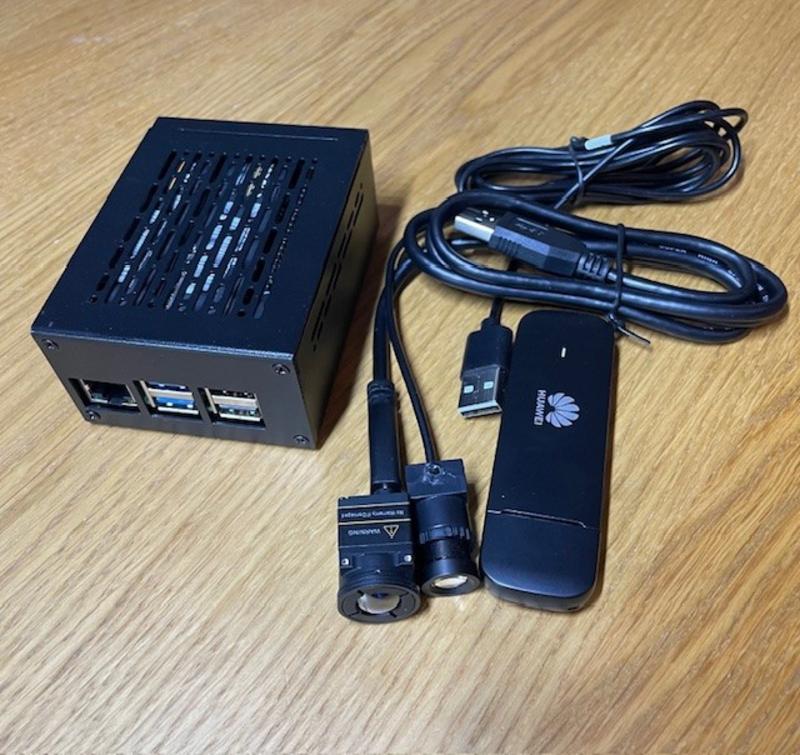
This video shows you how good the night vision is:
4 February 2025 6:00pm
Dear Kim, thank you for your suggestion and your quick response. Do the thermal video recorders rely on wifi for storing/transferring data or do they also work with SD cards? And could you give me an estimate of the approximate price range?
4 February 2025 6:25pm
I’ll reply with further commercial details direct to you. I think you are not supposed to discuss to that level in these discussions. This is managed product at this stage, not mass market (yet), so I customise it for people.
It doesn’t work with sd cards directly. The normal way is via a network. But we can discuss your preferred way of working. It could be network, it could be 4G stick with vpn. My preference is to install them with nvme SSDs as they are reliable and fast, so that translates better into support.
I’ll message you.
Trail Cameras in the City
3 February 2025 6:22pm
The New Way We Listen to Nature: A Tech Revolution in Conservation and Restoration
30 January 2025 7:44pm
INSTANT DETECT 2.0 - ALPHA TESTING
28 January 2025 3:18pm
Collaring Elephants and Post Release Monitoring
28 January 2025 3:16pm
Help Needed with Browning BTC-8E-HP5 Trail Camera Video Settings
16 January 2025 7:30pm
24 January 2025 9:45pm
Do the short videos happen mostly at night? If so, this is likely a problem with low batteries. The higher power required to power the IR flash can cause the camera to shut-down mid-video.
If this is happening with well charged batteries, it sounds like a camera failure (though I have not seen this).
[The factory firmware also limits night video to 20 seconds. If you want to work around this, I have developed a firmware image that eliminates this limit. The firmware also contains some other features that you may find useful. The firmware is available on my github site at: https://github.com/robertzak133/unified-btc-reverse ]
CCTV or camera trap for 24/7 video recording
8 January 2025 12:01pm
11 January 2025 4:30pm
BTW, on this subject. I've developed the 24/7 video recorder part for this now. It works really well. It saves as .mov files that play on all platforms, Linux, Mac and Windows.
13 January 2025 6:21pm
The thermal recordings in this video were recorded with it
24 January 2025 12:34pm
Hi,
I am using these for my current project:
They seem to be of good quality and support offline SD card storage. These run on 5V/1A. You should be able to run them for about two days on a 45 or 50,000mAh powerbank.
There should be UK versions of these.
However, like all CCTV manufacturers (atleast the ones i checked), downloading the continuous recordings isn't as easy as plugging in the SD card into your computer and copying the files. The video files are deliberately made hard to read. Everything is through their app. You can download events (movement/sound) captured by the cameras though.
INSTANT DETECT 2.0 – THE OPTIMISATION YEARS
21 January 2025 11:46am
Nature Tech Unconference
Postdoc on camera trapping, remote sensing, and AI for wildlife studies
15 January 2025 4:53pm











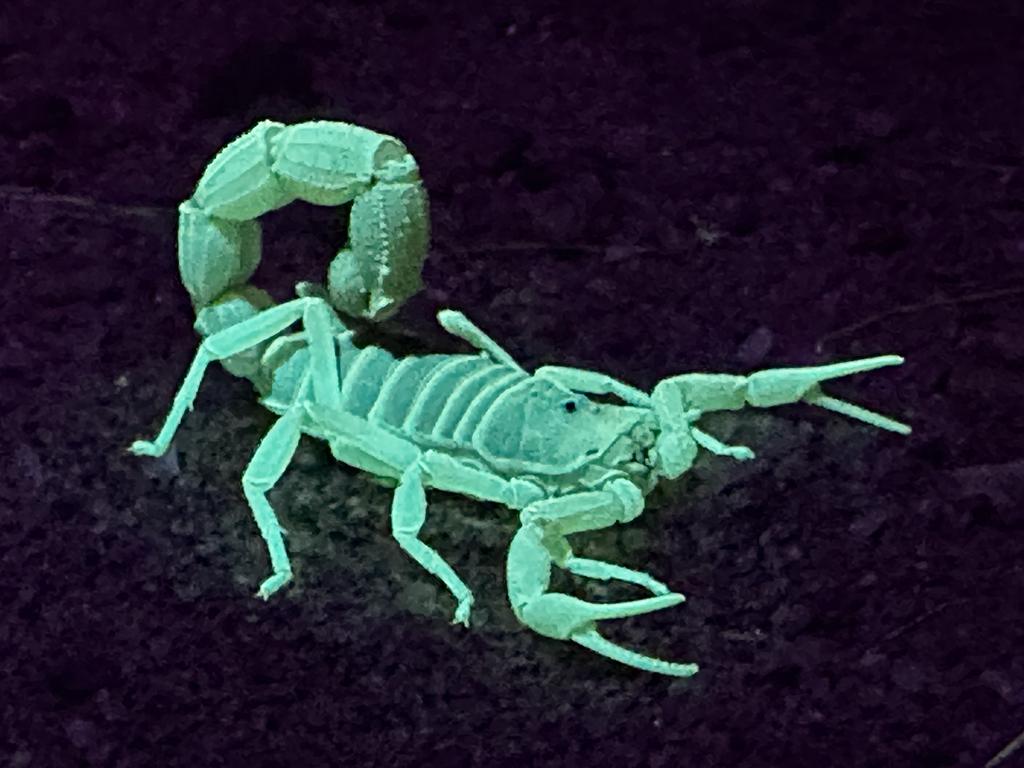




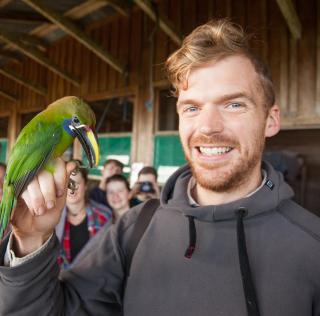































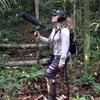
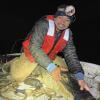










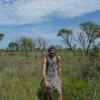



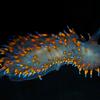





28 February 2025 1:26pm
Very cool project though, success with it.